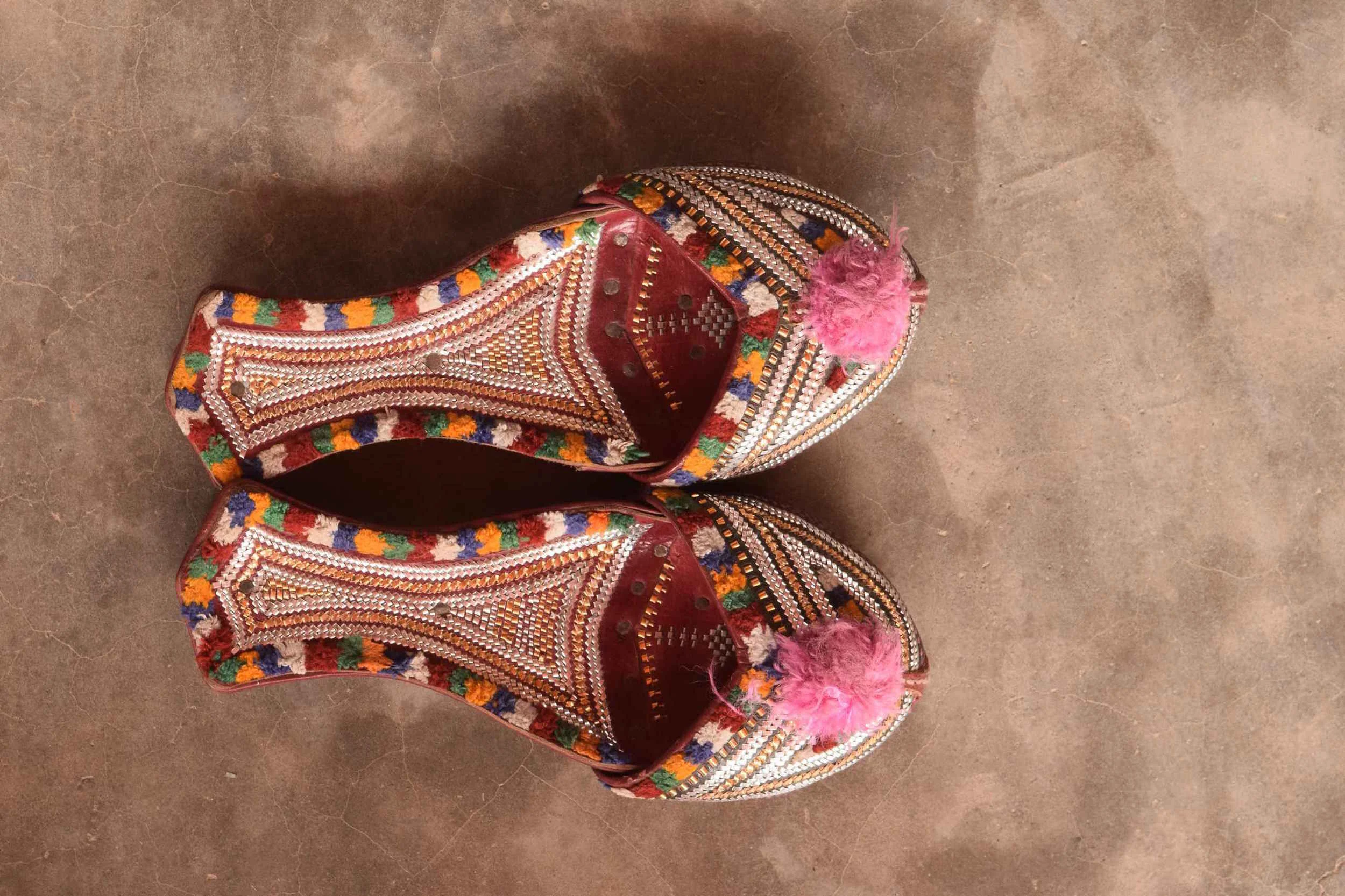
Varolo or Jhalani Jooti
Jhalani Jhootis are bedecked with intricate silver or zari work. Earlier Meghwars used real silver zari to adorn these shoes but these are now replaced with synthetic ones. The colorful torni border on the shoe was a favourite among the women. Both sides of the sole were etched by hand with floral designs and geometric shapes. These motifs varied according to the preferences of the community or the artisan. These shoes were popular amongst all the Kachchhi communities except the Rabaris, who preferred a more rugged style of work. In Banni, The leather artisan made a special pair of jhootis for the Maldhari bride. He would be welcomed with the shoes at the wedding to the beats of a drum and music. The shoes were blessed with offerings by guests and given to the artisan as a token of gratitude. Apart from this, he would be rewarded with either a baby cow, buffalo or goat, sometimes a camel. This system still exists in some parts of the Banni.

Varolo or Boot
These shoes were made in vibrant shades of red, yellow and blue sourced from Khatri dyers, and ornamented with silver or zari work. Designs and cuts on the soles were differentiated by community. The Maldharis of the Banni region were the largest users of these.Along with the rest of the wedding attire, they would always keep these shoes safe as part of the wedding trousseau. The bridegroom’s family would bless the shoes during a wedding meal ritual. This is still prevalent in some parts of the Banni.
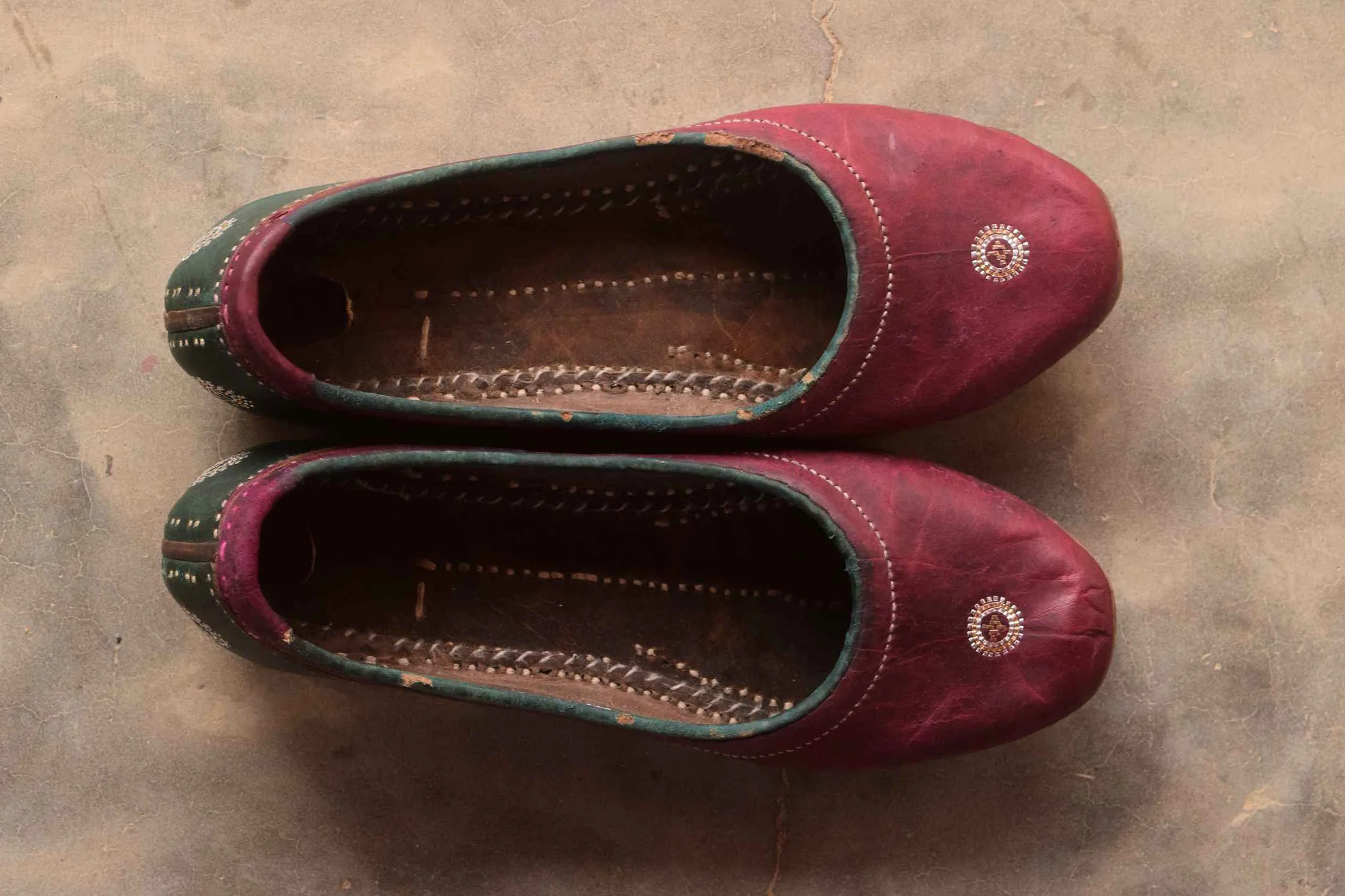
Getli Joota
Getli Jhoota were widely worn across Kachchh, but were most popular among men in the Banni region. These shoes were a dark brown or red, with minimal zari work. They were made from cow or buffalo hide which yielded thick leather well suited to endure the harsh terrain of Kachchh. Built to last, these shoes had thick soles that lasted three to four years of continuous use. Maldharis would often requested specific identifying features in their shoes. The soles had geometric cut outs which left distinct, identifying footprints behind. Other features might include a metal horse shoe attached to the heel, or pieces of leather sandwiched between the layers of sole to would make a distinct sound while walking.
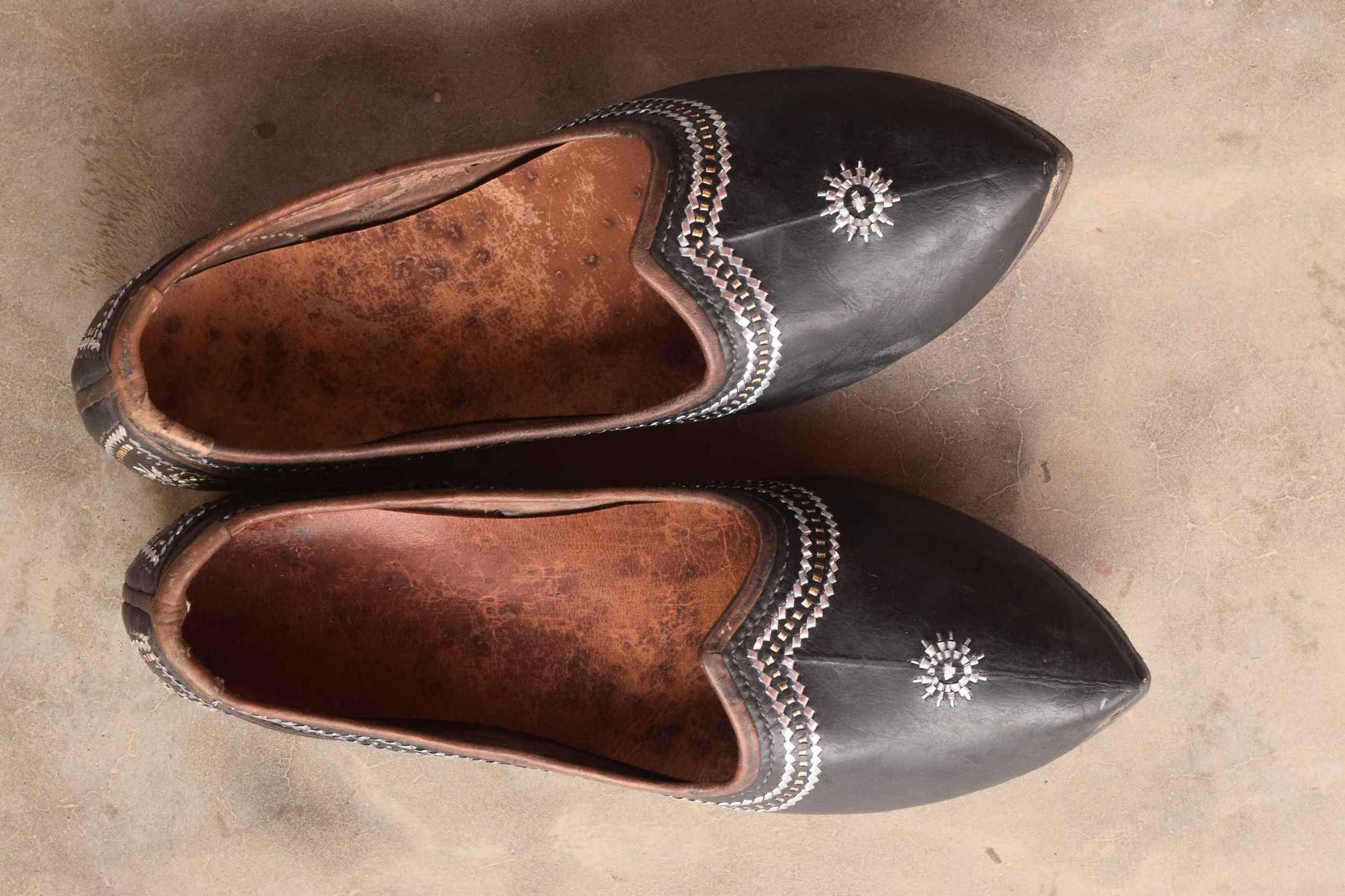
Getli Joota
Getli Jhoota were widely worn across Kachchh, but were most popular among men in the Banni region. These shoes were a dark brown or red, with minimal zari work. They were made from cow or buffalo hide which yielded thick leather well suited to endure the harsh terrain of Kachchh. Built to last, these shoes had thick soles that lasted three to four years of continuous use. Maldharis would often requested specific identifying features in their shoes. The soles had geometric cut outs which left distinct, identifying footprints behind. Other features might include a metal horse shoe attached to the heel, or pieces of leather sandwiched between the layers of sole to would make a distinct sound while walking.
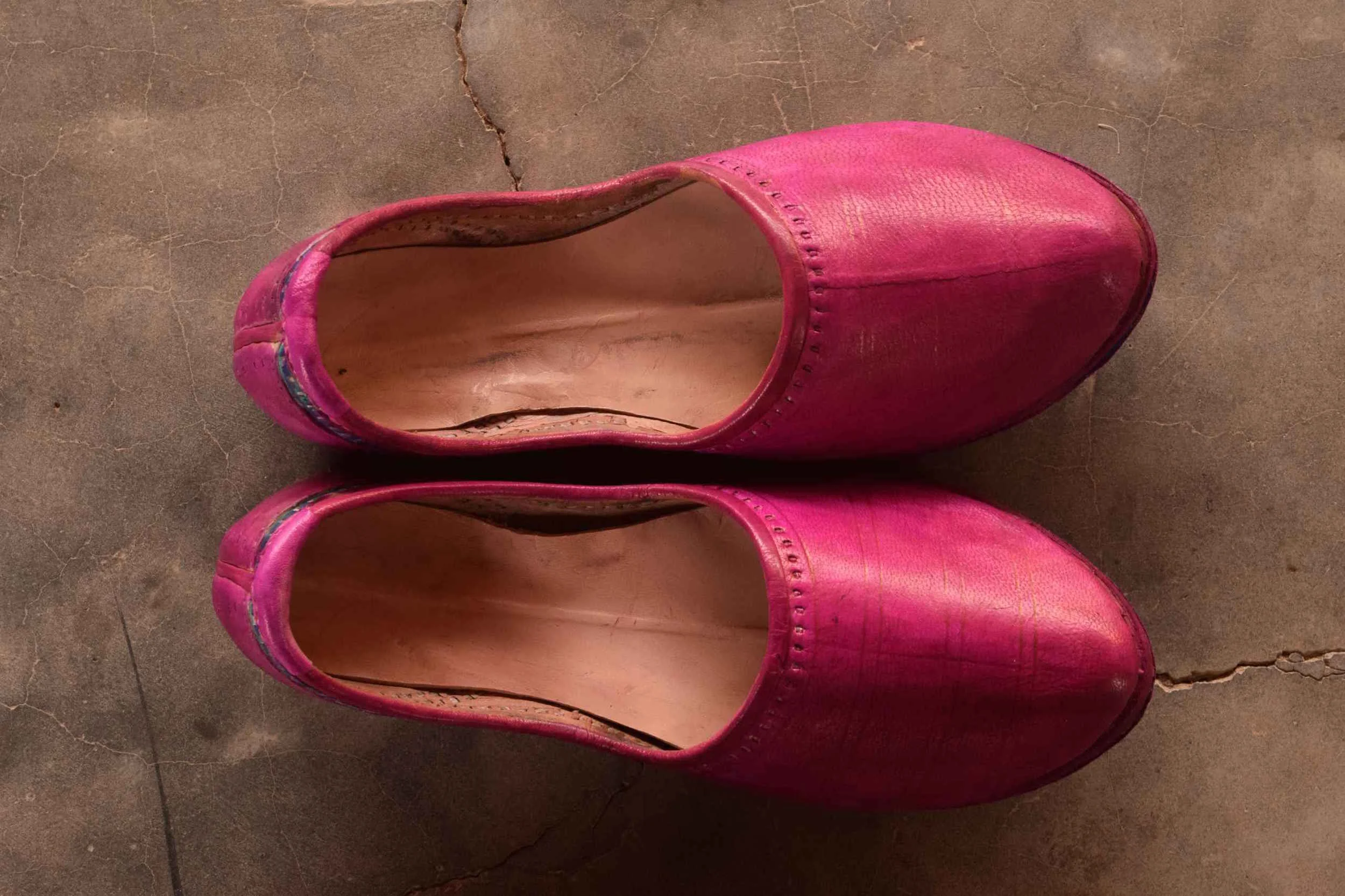
Setiyaro
These shoes were simple and lightweight, with minimal design, and were used by the elder Maldhari men in Banni. Cutout motifs on the sole were present only if the user requested them.
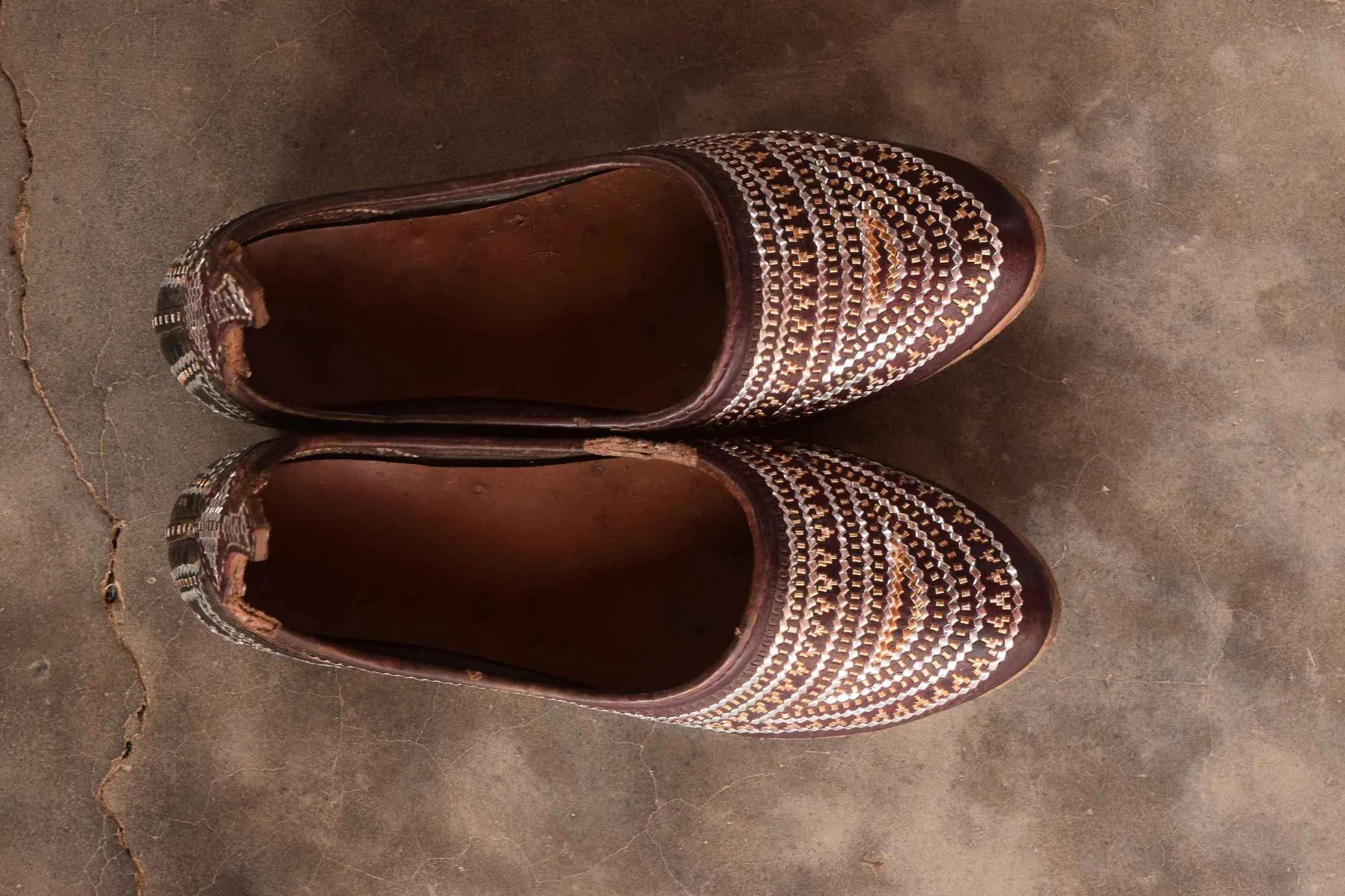
Choti vala Joota
These shoes were so named because of the distinctive tail at the back of the shoe. Because of the fine zari work, they were worn on special occasions by men in Banni. The pattern for the toe-cap could be pointed or rounded, depending on the wearer’s preference. The Mutwa Maldharis were particularly fond of this style.
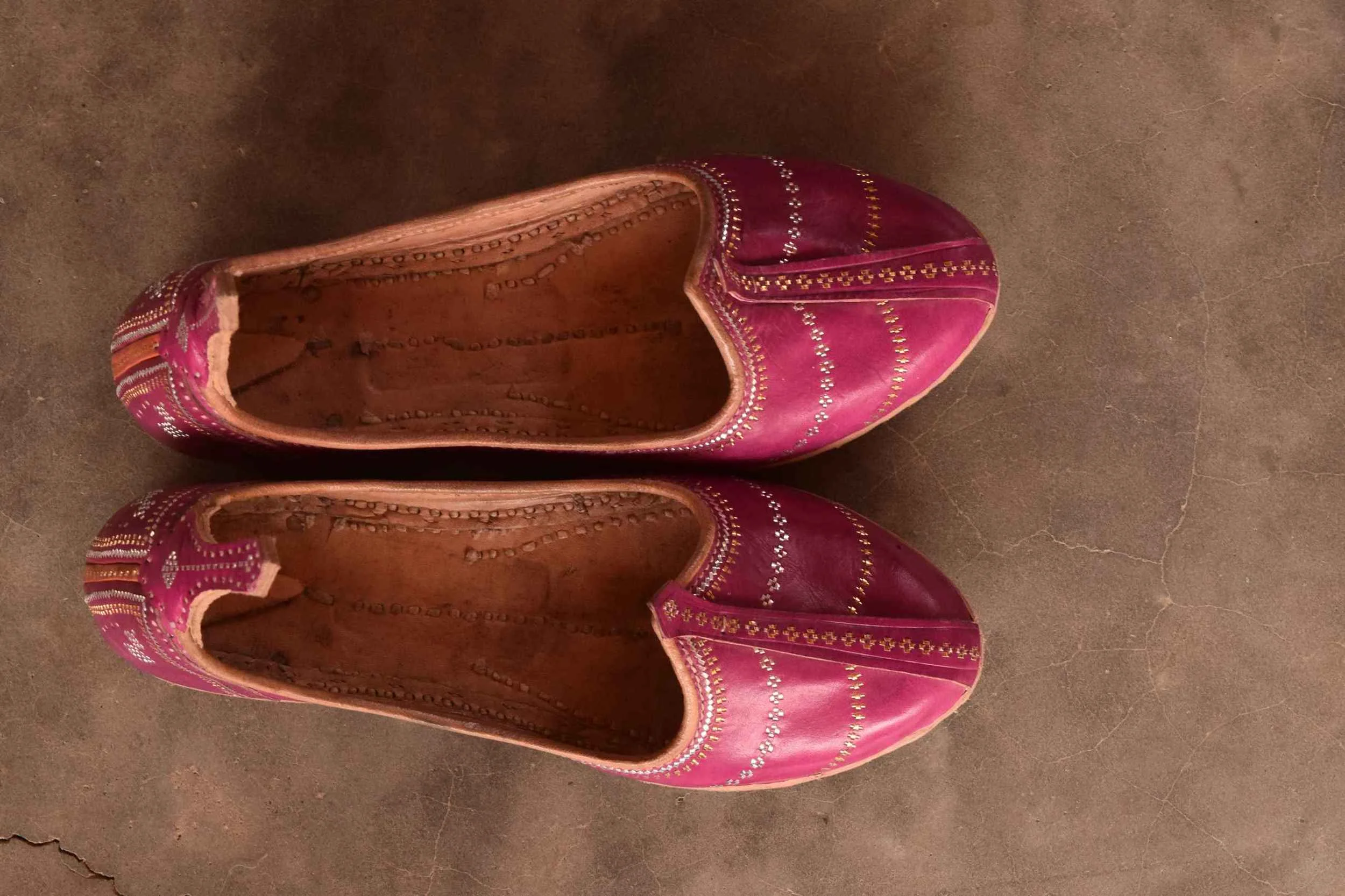
Chhoti vala Joota
These shoes were so named because of the distinctive tail at the back of the shoe. Because of the fine zari work, they were worn on special occasions by men in Banni. The pattern for the toe-cap could be pointed or rounded, depending on the wearer’s preference. The Mutwa Maldharis were particularly fond of this style.
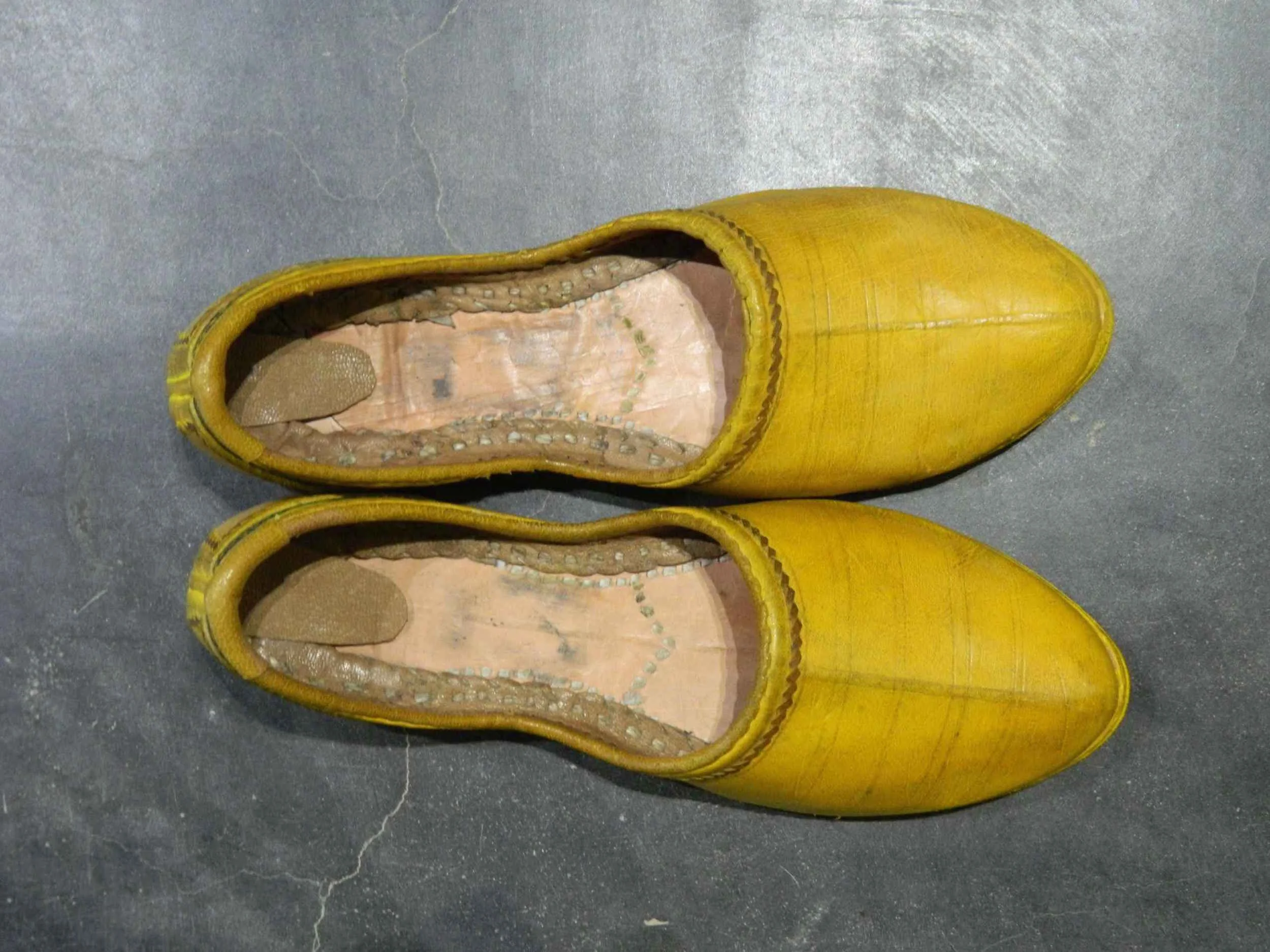
Chelar
These were daily wear shoes with thin and lightweight soles. The distinct feature of these shoes was a gap of exact two figures between the phadiyan half sole and heel.The width of the sole was kept extremely narrow to maintain lightness.
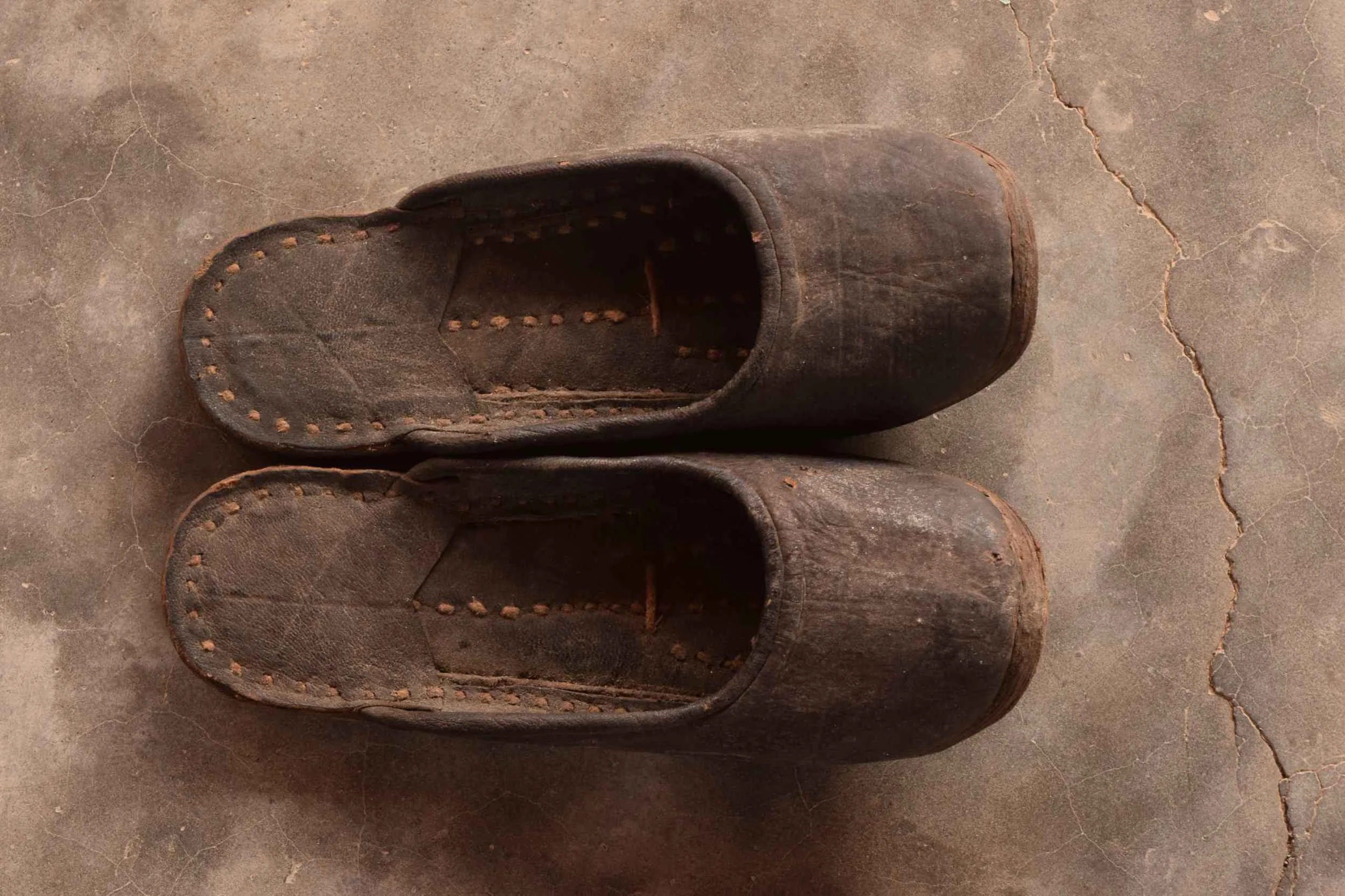
Sapaat or Chhappat
The word ‘Sapaat’ means flat. The shoes were simple and had a rough finish. They were popular among middle-aged and older women in East Kachchh. Rounded toe caps were worn mostly by the Wagadiya Rabaris (sheep and goat herders), Durbars or “upper caste” Hindus and Gadhvi (cattle herders and farmers). Slightly pointed toe-caps were popular among the Ahir (farming) women.
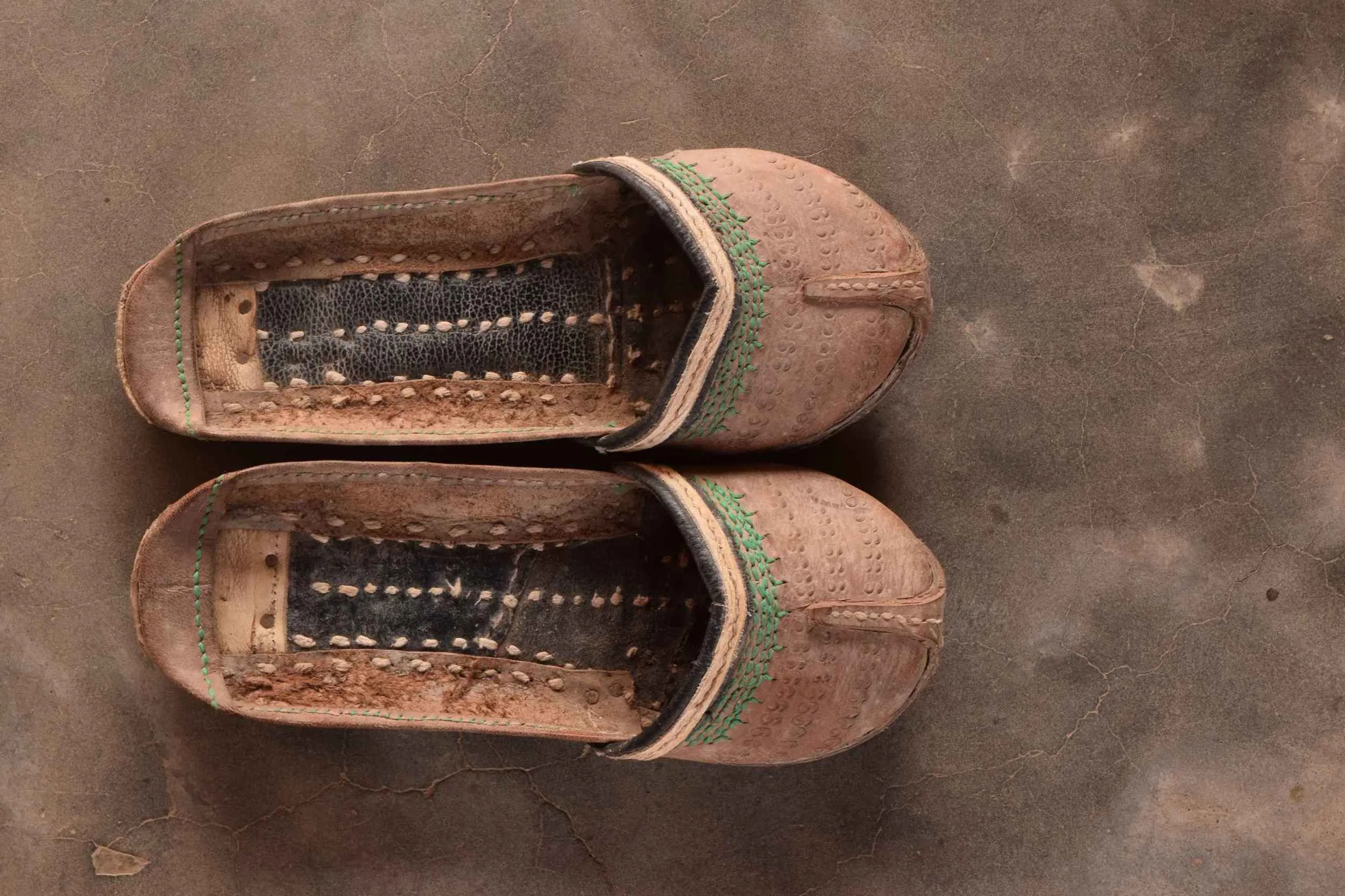
Sapaat or Chhappat
The word ‘Sapaat’ means flat. The shoes were simple and had a rough finish. They were popular among middle-aged and older women in East Kachchh. Rounded toe caps were worn mostly by the Wagadiya Rabaris (sheep and goat herders), Durbars or “upper caste” Hindus and Gadhvi (cattle herders and farmers). Slightly pointed toe-caps were popular among the Ahir (farming) women.
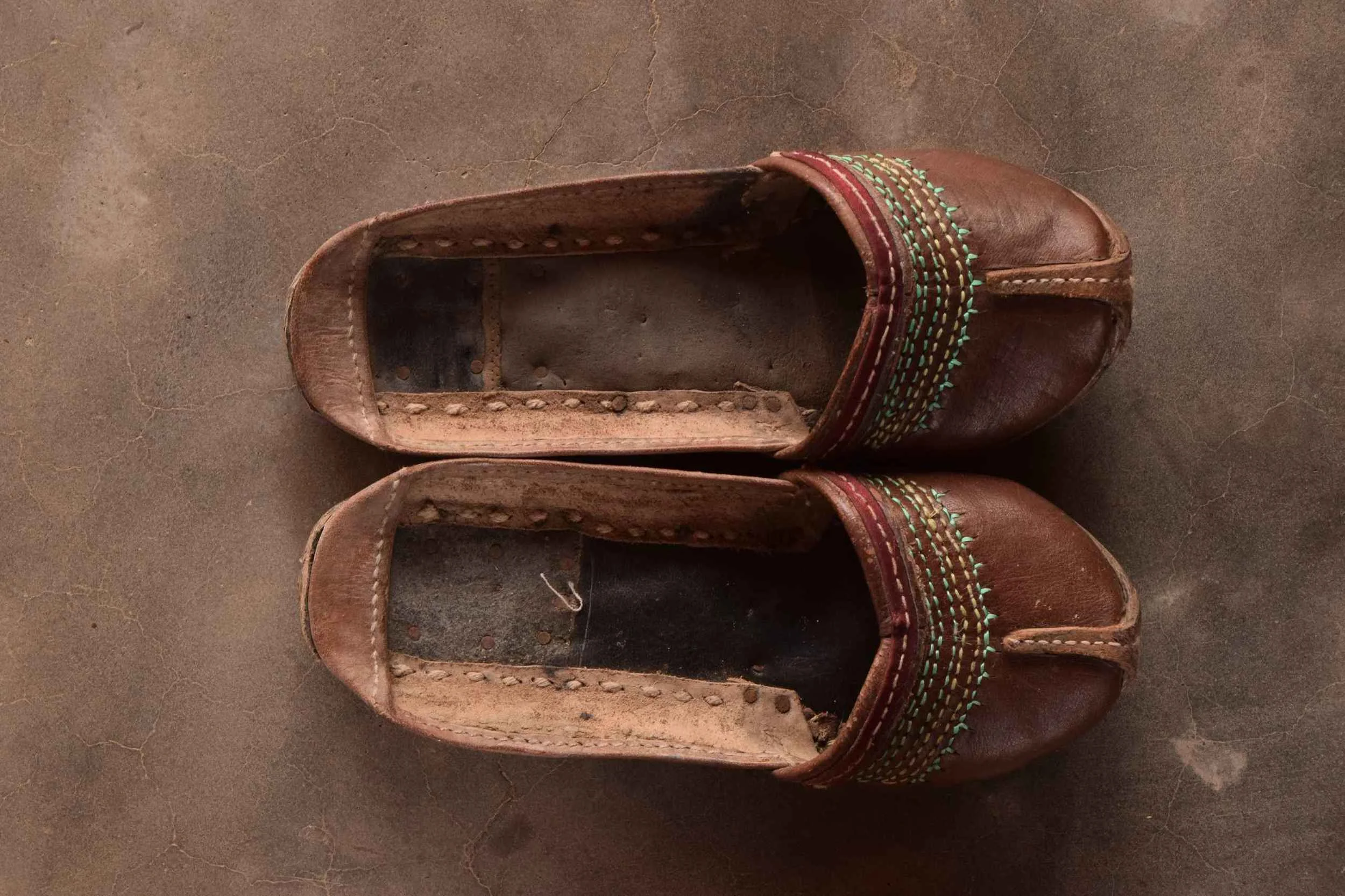
Sapaat or Chhappat
The word ‘Sapaat’ means flat. The shoes were simple and had a rough finish. They were popular among middle-aged and older women in East Kachchh. Rounded toe caps were worn mostly by the Wagadiya Rabaris (sheep and goat herders), Durbars or “upper caste” Hindus and Gadhvi (cattle herders and farmers). Slightly pointed toe-caps were popular among the Ahir (farming) women.

Sapaat
These flat shoes were worn by women across the Banni region. The pattern varied from other shoes in rest of the Kachchh with surface zari work.
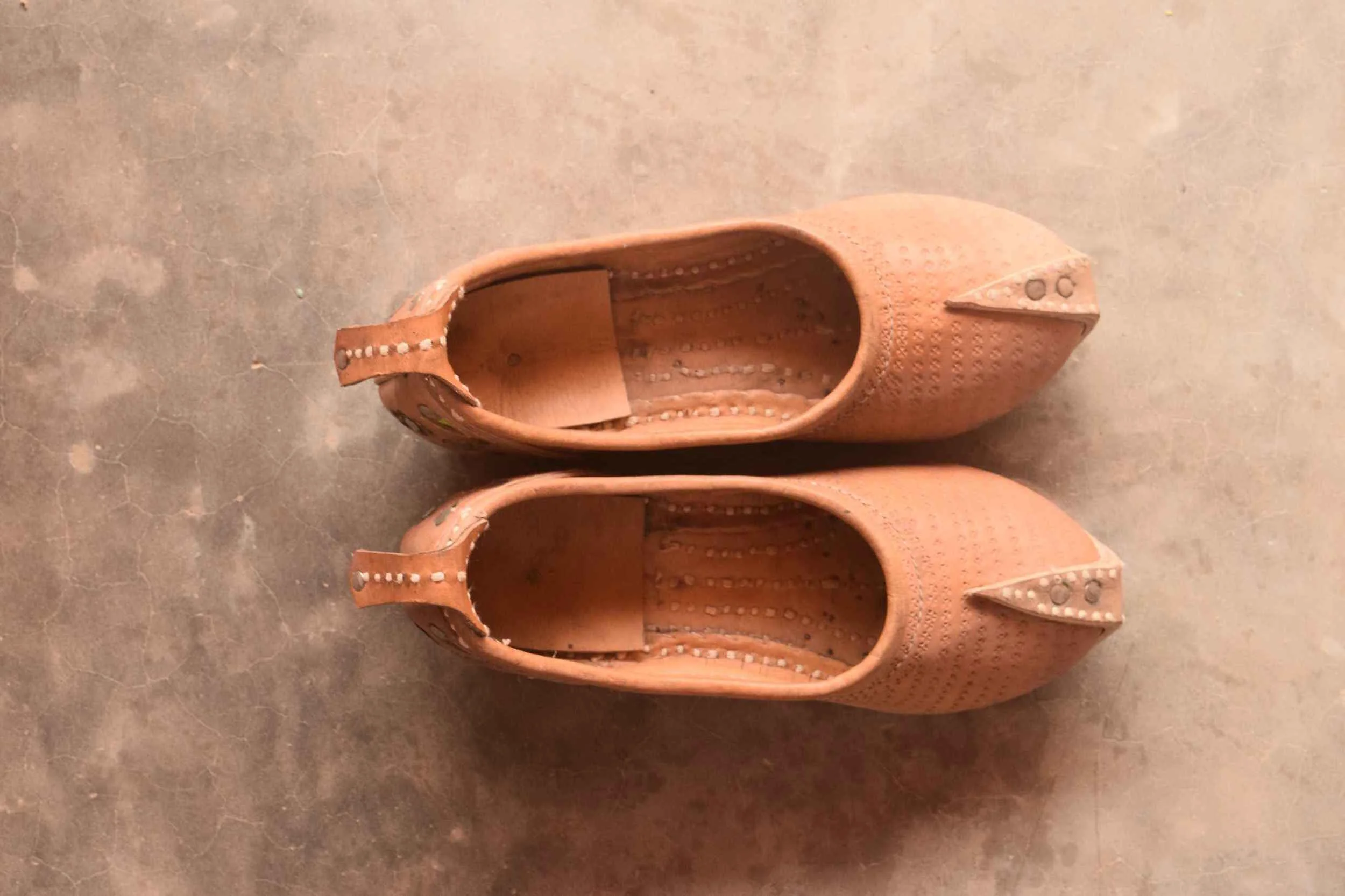
Boot
These shoes with their distinct toe-cap and back tail were worn by Wagadiya Rabaris, the sheep and goat herders in the region of Wagad. The Rabaris had a taste for the rustic and the shoes therefore were heavy with a thick outsole with nails and rivets for decoration. They valued these shoes to such an extent that they often hung them safe on their walking sticks while on the move instead of walking in them.
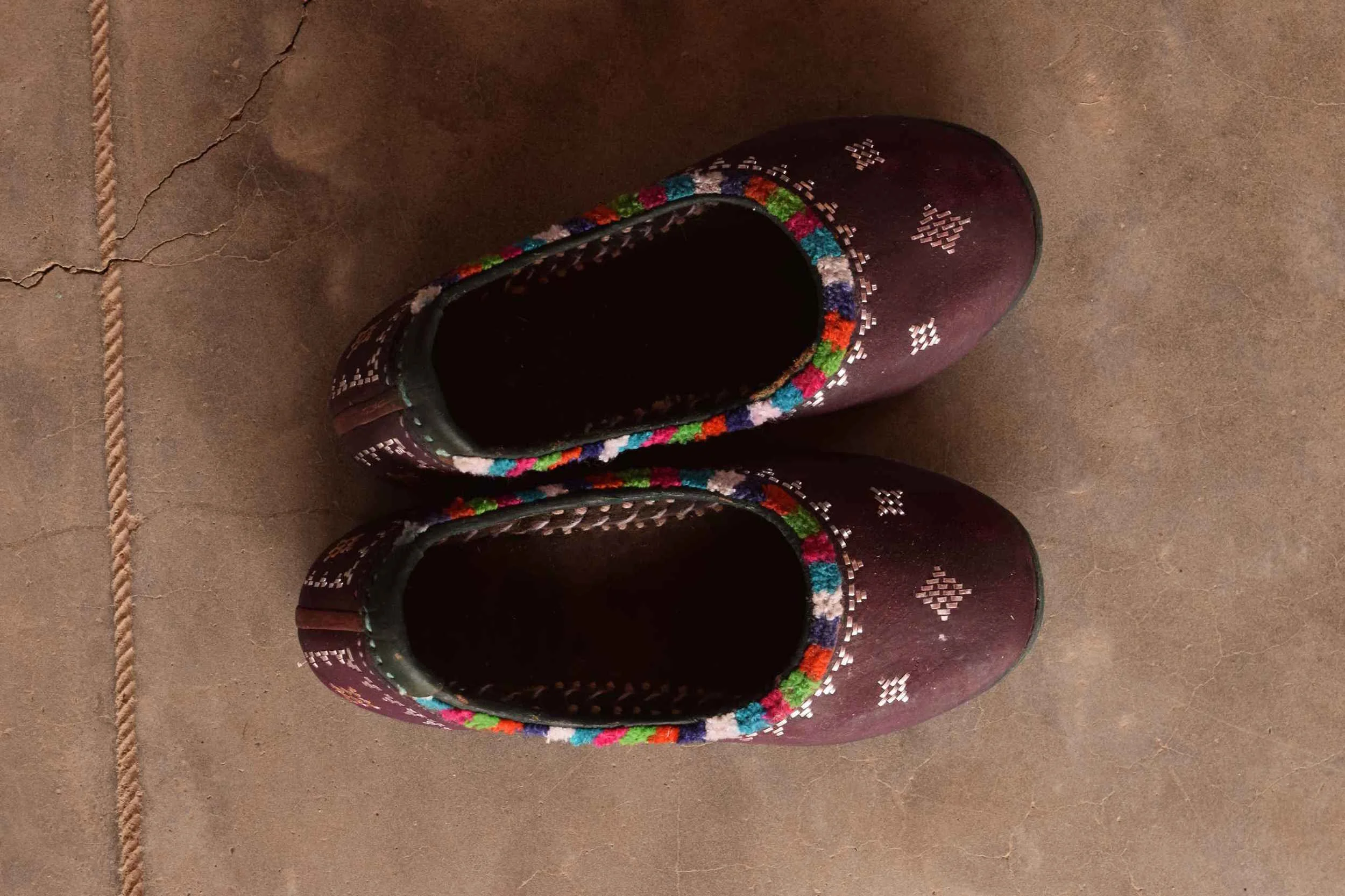
Kaunsla
These shoes were accompanied with a ritual of bringing it to the family when a baby boy was born. Finely embroidered with zari and torni, these shoes were offered to the baby on the sixth day of his birth as a pair to be worn when he learnt to take his first steps.
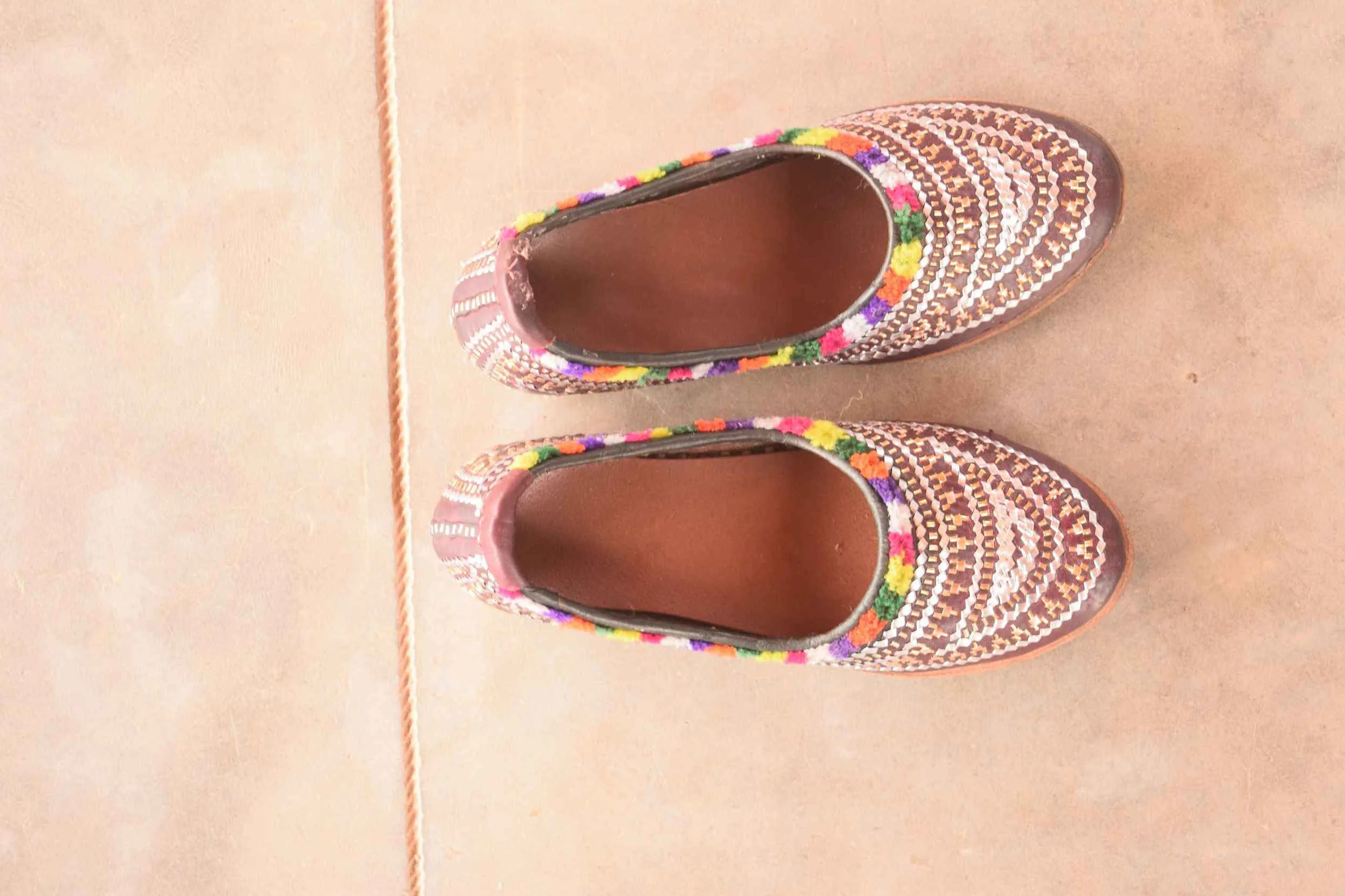
Kaunsla
These shoes were accompanied with a ritual of bringing it to the family when a baby boy was born. Finely embroidered with zari and torni, these shoes were offered to the baby on the sixth day of his birth as a pair to be worn when he learnt to take his first steps.














